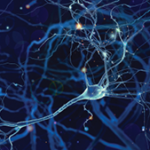The underlying mechanism by which this occurs is still unclear, says Dr. Mao, but he and other researchers are shedding light on the problem. “It could be the result of the opioid facilitating nociceptive transmission. The net outcome is to make the system more responsive to painful stimulation,” he says.
“Clinically, we must differentiate normal pain from opioid-induced hyperalgesia, because management is different,” continues Dr. Mao. Several clues in the patient report of pain may be red flags to the presence of hyperalgesia. The most prominent one, of course, is the observation that pain reduction is not achieved with dose escalation. Worse, the pain score may increase in the presence of higher doses of opioids.
Be open-minded about what opioids can and cannot do. Opioids need to be part of a larger overall strategy for pain management —not the sole analgesic solution.
“And when the patient has preexisting pain, it may change its location or quality, becoming diffuse, nagging, and hard to describe. Two types of pain—the preexisting one and the one related to hyperalgesia—may be superimposed on one another. It’s not a simple exacerbation of preexisting pain,” says Dr. Mao. “We believe that the cellular mechanisms mediating hyperalgesia are similar to those that mediate neuropathic pain,” he says, adding that the N-methyl-D-aspartate (NMDA) receptor is likely involved.
According to Dr. Mao, quantitative sensory testing can also be used to determine whether hyperalgesia is occurring. Agents like ketamine that block the NMDA receptor may affect the hyperalgesic response, at least temporarily. “We need solid clinical trials to verify that these clinical findings can be corroborated with ketamine-type experiments,” said Dr. Mao, who also notes that hyperalgesia can coexist with tolerance and addictive behaviors.
What is Dr. Mao’s advice to clinicians who manage patients with chronic pain who may be experiencing hyperalgesia? “Be open-minded about what opioids can and cannot do. Opioids need to be part of a larger overall strategy for pain management—not the sole analgesic solution,” he said.
Pain as a Women’s Health Problem
A review of research to date on the interaction between gender and pain experiences proves one thing: it’s complicated. Epidemiologic studies have confirmed that, compared with men, women are at increased risk for of chronic musculoskeletal pain disorders at any site, widespread pain and fibromyalgia, OA, RA, headache/migraine, and temporomandibular disorders.2-4
“We have explored different possible biologic and social factors that could account for these epidemiologic findings, including sex differences in nociceptive processing, differences in cognitive and affective variables, and gender roles and expectations,” says Lesley M. Arnold, MD, professor of psychiatry and director of the Women’s Health Research Center at the University of Cincinnati.



